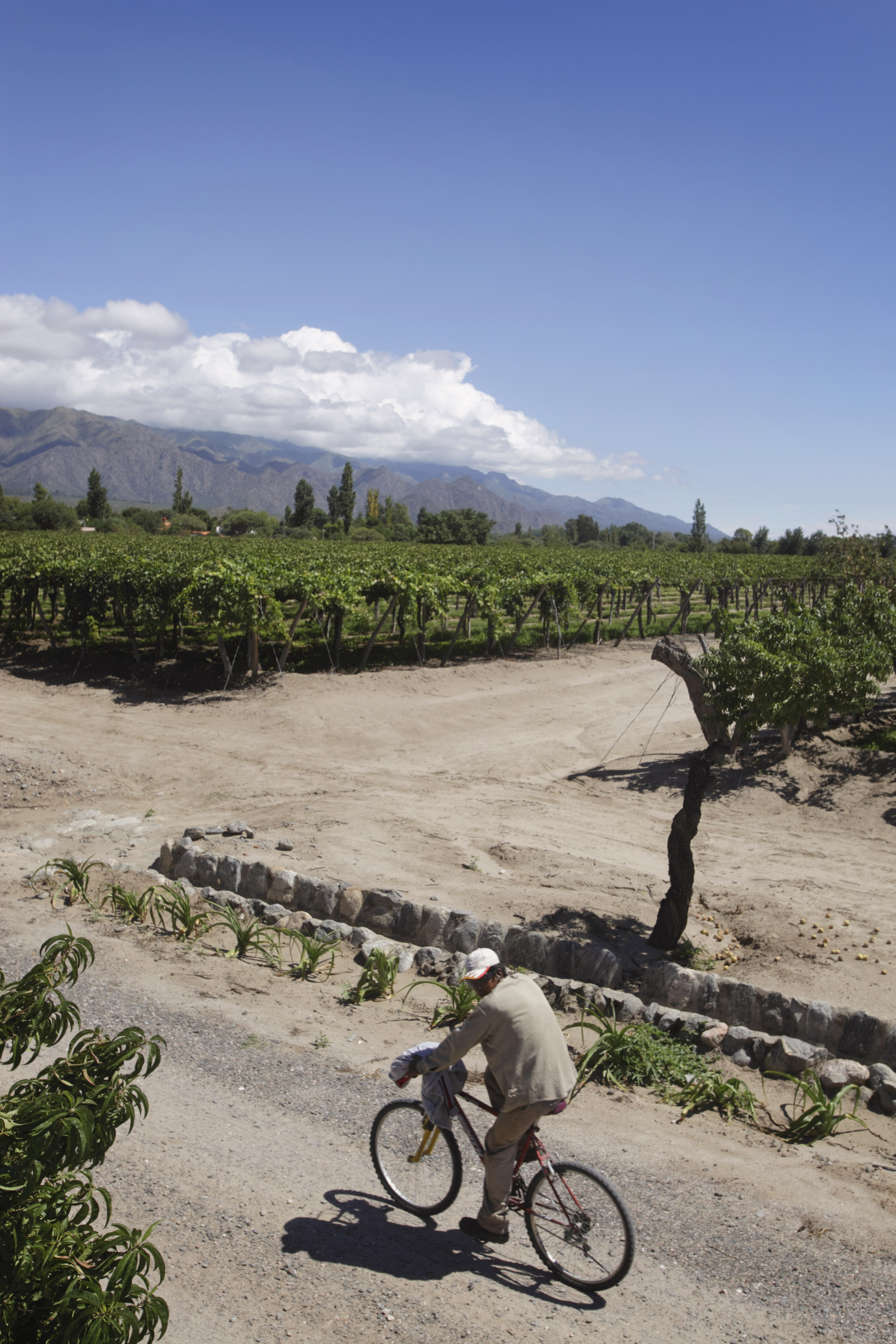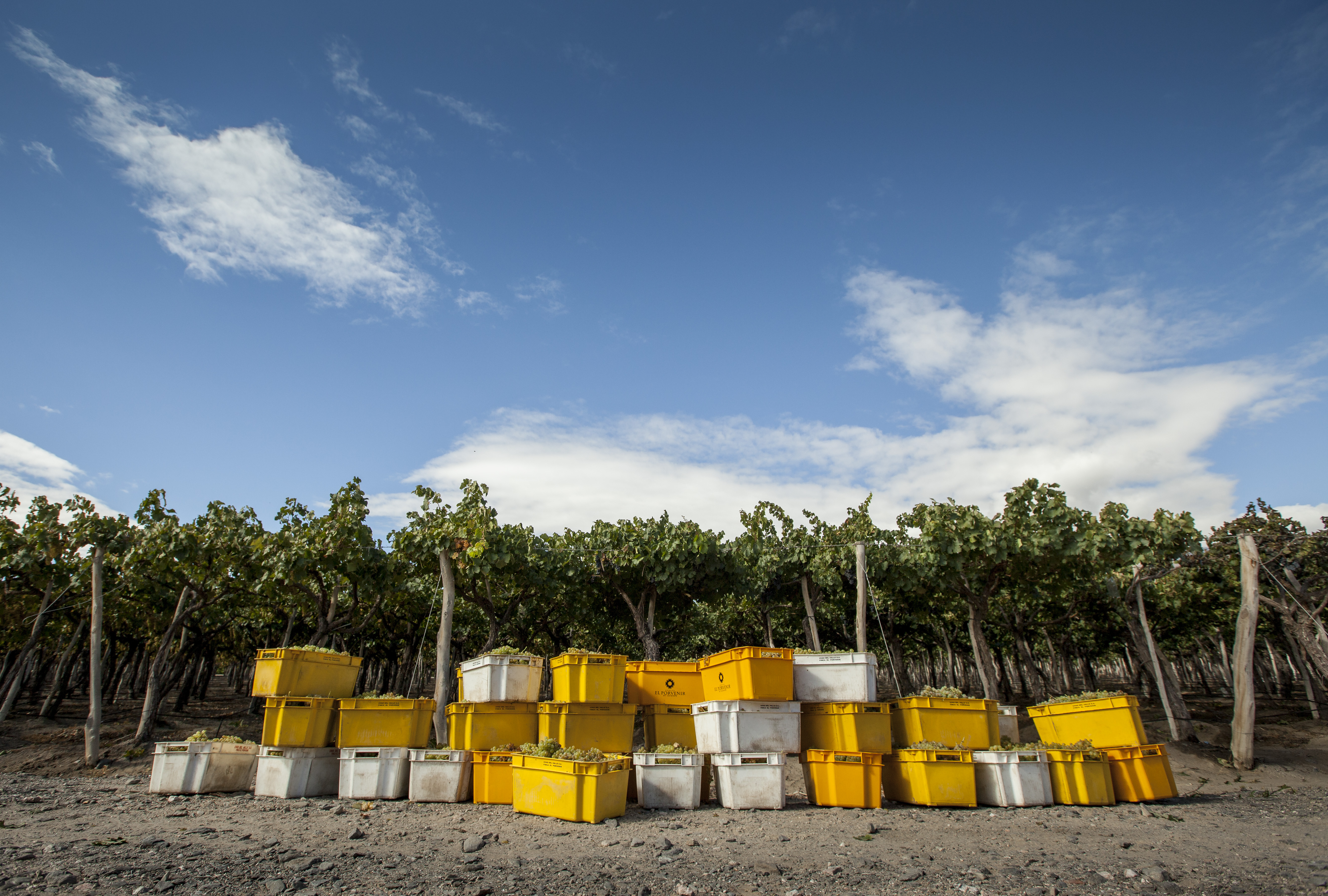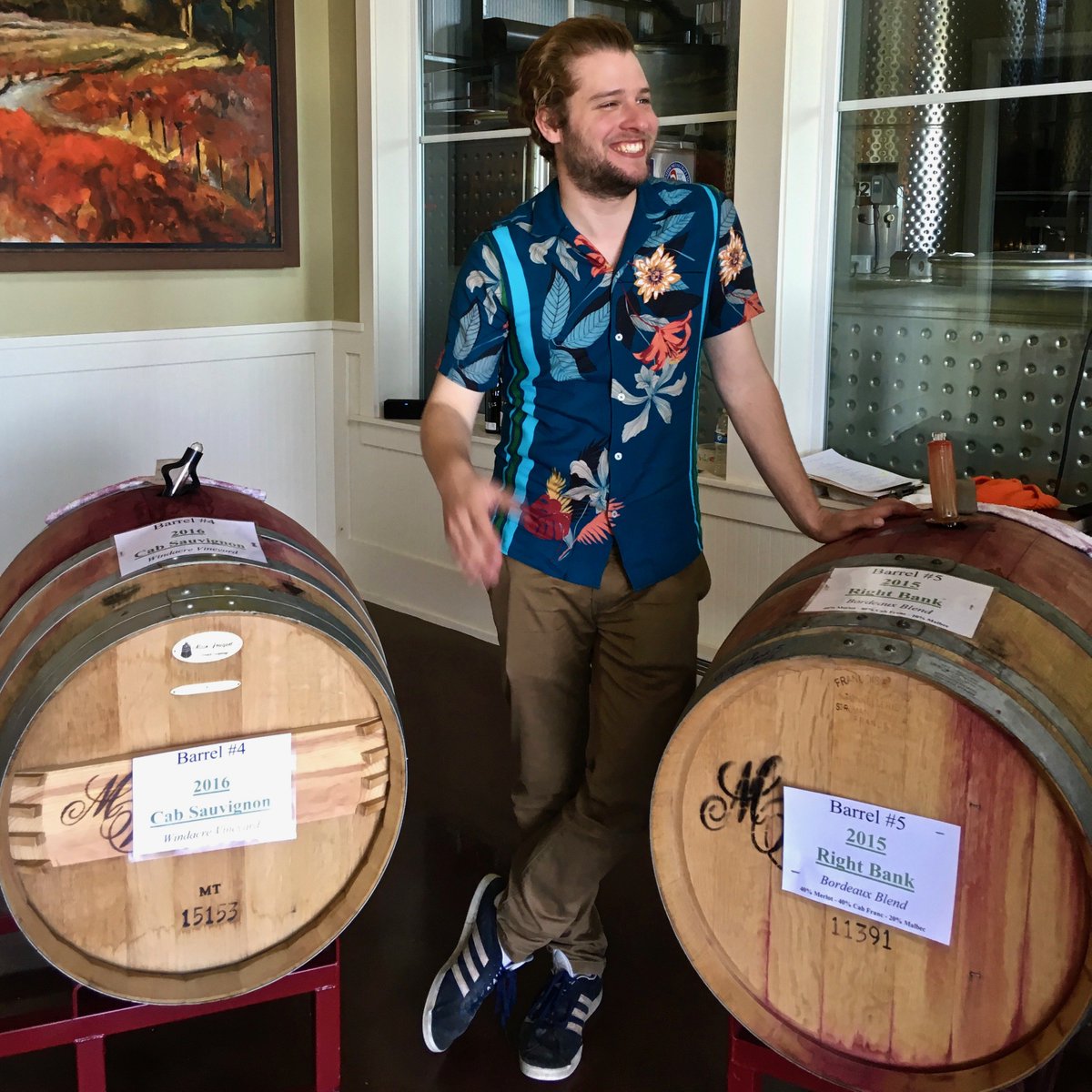
Dos Minas is Argentine slang for “two chicks." The project is owned and operated by Lucia Romero (who also runs Bodega El Porvenir de los Andes) and Heather Willens (originally from California).
Championing the unique desert environment or Cafayate, Dos Minas is producing some of the best and vibrant wines coming out of South America. The style is geared towards approachable and lush wines that are perfect any night of the week.
When studying wines from Argentina, the main regions that come to mind are the warmer areas like Mendoza and San Juan that focus of rich and ripe wines that fill the market of any South American wine section. Cafayate in the northwestern portion of Argentina is much more temperate and though the soils are similar to Mendoza, the higher elevation (5,450 feet above sea level) leaves us with wines that tend to retain much more acidity.
Two more climate properties of Cafayate give this small region the potential to be a world class region for South America. The first is the diurnal temperature variation. In many of the best growing regions in the world the day temperature may be quite warm but at night temperatures dip down to a point that slows the plant growth. In Cafayate, this includes summer days hovering just below 100F and summer nights getting as low as 54F. This slows down the vine’s ripening speed giving the potential for more hangtime (and therefore more concentrated flavors) without losing as much acidity and elegance you would if these nights were not so cool. The second property is the dryness. The surrounding mountains pull most of the moisture out of the skies preventing any significant rains during the growing season, a benefit to those trying to make world class wines.
Another way in which Cafayate and Dos Minas break from the Mendoza Malbec trope is by offering a larger variety of grapes. For most of Argentina, Malbec is the dominating presence. This was not always the case. Even though Malbec was among one of the first varietals to make it to Argentina (along with the rest of the Bordeaux varietals) there was never much of a demand beyond local consumption which resulted in well-made wines but with little concern over varietal integrity. During economic upheaval in the early 1900s, much of the Malbec was replaced with grapes that would offer higher yields. But as things stabilized and turned around at the end of the century, there became an international demand for quality wines and Malbec was the grape that stood out most to international investors.
(It should be noted that although the grape is technically the same varietal as its Bordeaux counterpart, the clone that is predominate in Argentina is slightly different from the French version, offering wines that are more velvety and actually have more aging potential on average.)
The star for Dos Minas though is Torrontes. (Malbec still thrives and is produced in this area but is not as much of a percentage of the acres planted as in Mendoza and San Juan). Torrontes is a fuller-bodied white wine that, because of the higher elevation, retains more acidity than other comparably fuller-bodied white wines. Heavy on the fruit, these wines tend to be very approachable.
In a field that tends to be dominated by a masculine presence, the history on Torrontes has been heavily influenced by female pioneers. One for the first winemakers to take Torrontes serious was Susana Balbo almost 40 years ago. The Dos Minas brand continues in this tradition by offering a serious wine (with four days carbonic maceration followed by a slow and cold fermentation) at a price point that is approachable and allows for everyday consumption (think Aligoté 20 years ago).

Grape Collective talks to Lucia Romero Marcuzzi about the story behind Dos Minas and what makes Cafayate a special place to grow wine.
Jonathan G Bomberg: Tell us about what makes your growing region unique and special in your opinion.
Lucia Romero Marcuzzi: With wines planted at 5,580 to 8,200 feet above sea level, Cafayate is one of the highest terrors in the world. The altitude and the thermal amplitud that this generates (warm days and cool nights) are the key elements to influence the growth of thew wines. The sandy and rocky soils, the soft breeze at dusk, the scarce and seasonal rains, and the intense sun exposure all year round makes Cafayate a privilege and unique region. All of these elements of nature result in grapes that have very thick skins that give the wines a lot of aromas, colors and intensity. The region itself is surrounding by local mountains which creates a microclimate that is unique and translate in wines with a lot of personality and a sense of place.
How did Dos Minas come to start? What is the brand's origin story?
I met Heather Willens, originally from California more than 13 years ago when I started working in the wine industry. We became good friends and partner in this project. At the time she helped me find importers of El Porvenir wines (my family´s winery) in the US. After working together for some time, we decided to launch the Dos Minas brand because we wanted to make wines in a different style that those made by my family´s winery. Wines that were easy to drink, with little intervention and almost no use of oak, wines that we like to drink and that spoke of Cafayate in a modern way, so we bought the grapes from my family´s vineyards and made the first wines in 2012.
What varietals does Dos Minas focus on and why?
We focus on the varietals that best develop in Cafayate and that best represent our terroir: Torrontés, Malbec and Tannat. 
Malbec of course grows exceptionally great all over our country from the North to the South of the Andes, and we wanted to show how Malbec’s from the North show different notes of black fruit, with freshness and also notes of spices that differentiate from most Malbec’s from Mendoza.
Tannat has found its place in Cafayate, it is a grape that needs a lot of time to ripe and this can be achieve easily in Cafayate, with the sunny and dry weather we have, it shows notes of ripe fruit and it loses its dry tannins by gaining balance, so it is very attractive, and we wanted people to discover this unique grape.
What is your guiding winemaking philosophy? What is your goal with this brand?
Our guiding winemaking philosophy is to make wines with a sense of place, with little intervention as possible in the winery, believing the work in the vineyards to obtain great grape quality is the best we can do. We want these wines to transport the consumers to our unique desert-like region, and at the same time we want to make wines that are easy to drink and enjoy with friends and family. Our goal is to continue to grow so that more people can discover our region, to develop new varieties like Cabernet Franc or a different style of Malbec, to keep showing consumers in the US (our main market) our unique region.
Cabernet Franc would definitely be exciting! What are some other goals for the winery looking into the future?
We currently work in a sustainable way but we would definitely like to have less intervention in the vines and the winery so we are trying to get the vineyards where we source our grapes to be certified as organic and we would also like to experiment with natural wines, especially with a style of wine called orange (white wine made as red with extended contact of the skins and seeds) or perhaps even a pet-nat made of Torrontés to have a sparkling wine. We love innovating, experimenting and pushing the limits and challenging traditions of how wines should be made and at the same time respecting our land.
What were some of the challenges you faced in launching Dos Minas?
The first one is to find an importer or distributor in the US that is willing to add a Malbec in the portfolio (there are so many!!) but because our region is so different than Mendoza and this of course shows in the wines, we were lucky enough to start working with Skurnik right from the beginning. The second challenge is how to stand out among a very long catalog or list of wines, again the region and the variety are keys that is why we develop the Torrontés and the Tannat as well.
The third and more complex one is the economic situation in Argentina and the challenges because of inflation and devaluation of currency in the past years, but we have learned how to manage that and not let this issues affect the quality of the wines, that is the most important thing for us.
Finally, I always like to ask each winery I interview if there is a book or an album that really inspires you that you think is underrated.
A book I love and that was very inspiring is called Authentic Wine (written by Good & Harrop) that speaks about being sustainable and true to the terroir where you grow wine in a very easy to approach and modern way and it gives excellent examples of what wineries did all over the world. In terms of fiction I love Rayuela (translated as Hopscotch) a book by Cortazar an Argentine writer, it is a very famous book but I think should be known more worldwide. It is written with such freedom and originality that it is inspiring, also to read it one must follow a guide of chapters going back and forth in the book and this makes it fun and different.
More on Argentina:










